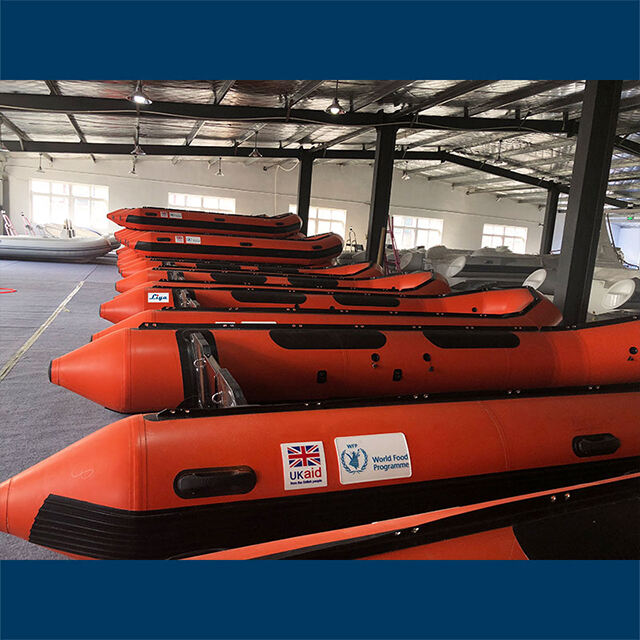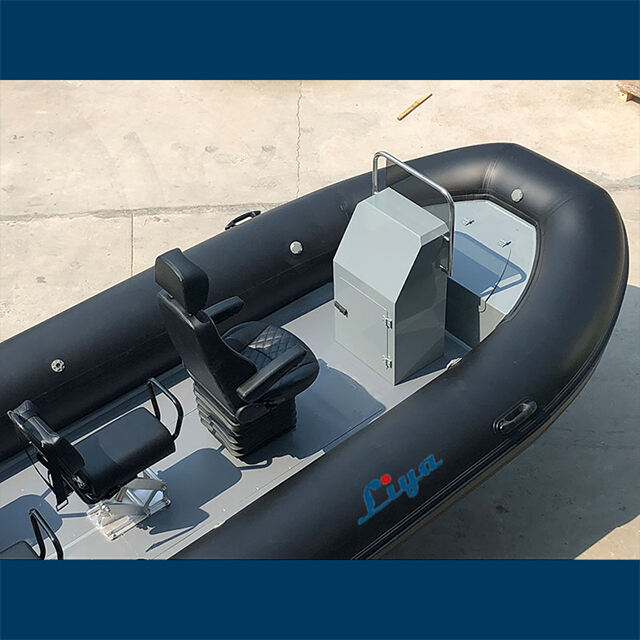The Critical Role of Advanced Materials in Maritime Rescue Operations
Maritime rescue operations demand equipment that can withstand extreme conditions while ensuring the safety of both rescuers and those in distress. At the heart of these operations, puncture-resistant materials have emerged as a game-changing innovation that has revolutionized the reliability and effectiveness of inflatable rescue boats. These sophisticated materials represent far more than just a technological advancement – they are literally the difference between life and death in critical rescue scenarios.
In challenging maritime environments, where sharp debris, rough coastal edges, and extreme weather conditions pose constant threats, the integrity of rescue vessels cannot be compromised. This is where puncture-resistant materials prove their worth, offering unparalleled protection and durability that traditional materials simply cannot match. From high-stakes ocean rescues to emergency response in flood-ravaged communities, these materials have become indispensable in modern rescue operations.
Understanding Puncture-Resistant Material Technology
Advanced Composite Structures
Modern puncture-resistant materials utilize sophisticated multi-layer composite structures that combine different materials for maximum protection. The outer layer typically consists of high-strength synthetic fibers like Hypalon or Neoprene, which provide excellent resistance to abrasion and environmental factors. Beneath this, reinforcement layers made from materials such as Kevlar or similar high-tensile strength fabrics create an almost impenetrable barrier against punctures.
These composite structures are engineered to distribute impact forces across a wider area, preventing single points of failure that could lead to catastrophic deflation. The layered approach also allows for some degree of flexibility, ensuring the boat remains maneuverable while maintaining its protective properties.
Material Science Innovations
Recent advances in material science have led to the development of even more sophisticated puncture-resistant materials. New polymer blends and manufacturing techniques have produced materials that not only resist punctures but also offer enhanced UV protection, chemical resistance, and improved thermal stability. These innovations have significantly extended the service life of inflatable rescue boats while reducing maintenance requirements.
Scientists continue to push the boundaries of material technology, experimenting with self-healing compounds and smart materials that can actively respond to damage. These developments promise to make future rescue boats even more resilient and reliable in challenging conditions.

Performance Benefits in Rescue Operations
Enhanced Durability and Reliability
The implementation of puncture-resistant materials has dramatically improved the durability of inflatable rescue boats. These materials can withstand repeated impact with floating debris, rough shorelines, and submerged obstacles without compromising the vessel's integrity. This enhanced durability translates to fewer equipment failures during critical rescue operations and reduced downtime for repairs.
The reliability factor is particularly crucial in remote rescue operations where immediate repair facilities may not be available. Rescue teams can operate with greater confidence, knowing their equipment is protected by materials specifically designed to withstand harsh conditions.
Improved Safety Standards
Safety considerations are paramount in rescue operations, and puncture-resistant materials have significantly raised the bar for equipment standards. These materials provide an additional layer of security for both rescue personnel and those being rescued, minimizing the risk of sudden deflation or structural failure during critical moments.
The enhanced stability and structural integrity offered by these materials also improve the overall handling characteristics of rescue boats, allowing teams to operate more effectively in challenging conditions. This improved performance can make the difference between success and failure in time-critical rescue scenarios.
Environmental Adaptability and Performance
Extreme Weather Resistance
Puncture-resistant materials used in modern rescue boats are engineered to maintain their protective properties across a wide range of environmental conditions. From freezing arctic waters to tropical heat, these materials remain stable and effective. The advanced chemical composition of these materials prevents degradation from exposure to saltwater, UV radiation, and extreme temperatures.
This environmental adaptability ensures that rescue boats can be deployed quickly and reliably in any climate or weather condition, making them truly versatile tools for emergency response teams worldwide.
Long-term Durability in Marine Environments
The marine environment presents unique challenges for rescue equipment, with constant exposure to corrosive elements and varying weather conditions. Puncture-resistant materials are specifically formulated to resist these degradative factors, maintaining their protective properties over extended periods of service life.
This long-term durability not only ensures reliable performance but also represents a cost-effective investment for rescue organizations. The extended service life and reduced maintenance requirements of these materials help optimize operational budgets while maintaining the highest safety standards.
Future Developments and Innovations
Emerging Material Technologies
The field of puncture-resistant materials continues to evolve, with researchers developing new compounds and manufacturing techniques that promise even greater levels of protection. Nanotechnology applications are being explored to create materials with unprecedented strength-to-weight ratios and self-repairing capabilities.
Smart materials that can actively monitor their own structural integrity and alert operators to potential issues before they become critical are also in development. These innovations will further enhance the safety and reliability of inflatable rescue boats.
Sustainable Manufacturing Processes
As environmental consciousness grows, manufacturers are investing in developing puncture-resistant materials that maintain their protective properties while reducing environmental impact. New eco-friendly manufacturing processes and recyclable materials are being introduced without compromising the essential protective characteristics required for rescue operations.
These sustainable initiatives represent the future direction of rescue equipment manufacturing, ensuring that life-saving technology can advance without contributing to environmental degradation.
Frequently Asked Questions
What makes puncture-resistant materials different from traditional boat materials?
Puncture-resistant materials utilize advanced composite structures and specialized polymer blends that provide superior protection against impacts and penetration while maintaining flexibility and durability. Unlike traditional materials, they incorporate multiple protective layers and often feature self-reinforcing properties that prevent catastrophic failure.
How long do puncture-resistant materials typically last in rescue boats?
With proper maintenance and care, puncture-resistant materials in rescue boats can maintain their protective properties for 10-15 years or more. However, the actual service life depends on usage frequency, exposure to environmental conditions, and adherence to maintenance schedules.
Can puncture-resistant materials be repaired if damaged?
Yes, most puncture-resistant materials can be effectively repaired using specialized techniques and materials. Many manufacturers provide repair kits and training for emergency fixes, though significant damage should be addressed by certified professionals to ensure the integrity of the protective properties is maintained.

